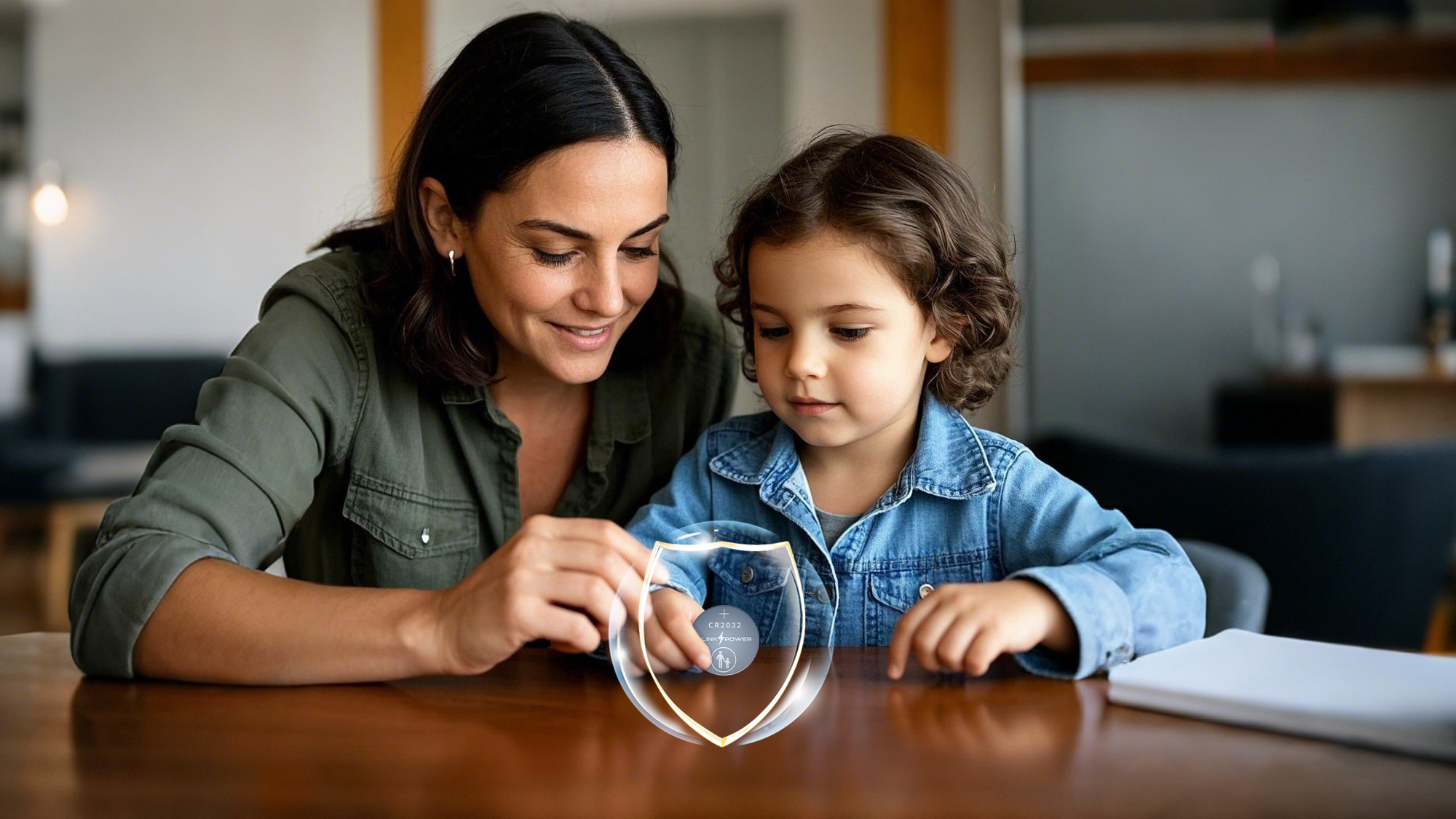Batteries can be said to be everywhere. From children’s beloved toys to the electronic devices we use daily, batteries make our lives easier. However, we often overlook the hidden safety risks behind batteries, especially for children, where batteries can cause potentially fatal accidents. In the United States alone, 2,800 kids require emergency treatment for swallowing button batteries annually. That breaks down to approximately one child every three hours.

Status of Battery Hazards
Nowadays, various types of batteries are everywhere in our lives. From common alkaline batteries, and lithium batteries, to button batteries, they come in various shapes and sizes. According to relevant data, many accidents caused by batteries occur every year. Among them, button batteries are very attractive to children because of their compact appearance, it's easy to put them in their mouth, nose, or ears.
If the button battery is accidentally eaten, the consequences will be disastrous. In a child's body, the battery may undergo a chemical reaction due to contact with body fluids, producing electric current and alkaline substances, which may burn the child's mouth, esophagus, and intestines as little as 2 hours, causing serious internal damage and even life-threatening injuries. Even ordinary batteries can cause irritation and damage to children's skin and eyes if they leak.
Unfortunately, there are no distinctive symptoms that can be directly attributed to battery ingestion. Nevertheless, vomiting of fresh blood, which appears bright red in color, might potentially signify acute bleeding occurring in the stomach or the esophagus. When a battery gets lodged in the esophagus, remedying the resultant damage typically demands one or multiple surgical procedures. These operations can potentially lead to side effects affecting the vocal cords. Consequently, follow-up examinations are commonly recommended to detect any injuries that might manifest with a delay.
Moreover, it has been observed that there is a direct correlation between the original or nominal voltage of a battery and the speed at which it can cause damage. Specifically, the higher the voltage, the swifter the potential for harm. For instance, an expired 3-volt lithium coin battery poses a greater danger compared to a 1.5-volt lithium cell, as its elevated voltage enables it to inflict damage at a much faster rate.
Precautions
1. Store the battery properly: Store the battery out of the reach of children, preferably in a high cabinet with a lock to prevent children from getting it.
2. Choose the right battery: When buying batteries, choose products with reliable quality and avoid buying three-no products. At the same time, choose the appropriate type of battery according to the requirements of the device, and do not mix different types of batteries.
3. Replace and dispose of used batteries in a timely manner: When the battery is exhausted, it must be replaced in time to avoid leakage due to over-discharge of the battery. Used batteries should be disposed of properly and should not be discarded randomly to avoid pollution to the environment and to prevent children from picking them up.
4. Strengthen safety education: Always explain to children the dangers of batteries and tell them not to put batteries into any part of the body. Children can be deeply aware of the dangers of batteries through vivid and interesting methods, such as picture books and stories.
Battery safety is related to children's lives and health, and we must not take it lightly. Let us start from ourselves and take effective preventive measures to create a safe environment for children and keep them away from the potentially fatal dangers caused by batteries. Let every child grow up healthily and happily under safe care.
Common devices with batteries that are easy for children to touch and swallow:
Children's Watch
Thermometer
Night Light
Remote Control
E-Book
Easy Pull Drawer
Children's Toys
Holiday Decorations
Calculator
What to do if a battery is accidentally swallowed:
1. Do not induce vomiting: Inducing vomiting may cause the battery to cause secondary damage to the esophagus, throat, etc. during the vomiting process, and may also cause the battery to rupture and release harmful substances, so do not try to make your child vomit.
2. For treatment information, please call: [National Battery Ingestion Hotline], currently 1-(800)498-86661.
3. Seek medical treatment promptly: Go to the hospital and carry the outer packaging or remaining parts of the battery so that the doctor can quickly and accurately understand the battery type, size, and other information and take more targeted treatment measures.




Share:
Battery Storage Box: The Ultimate Battery Organization Solution
Key Glossary of Battery Terms